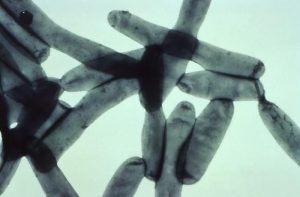NewsDesk @bactiman63
In a follow-up on the cluster of Legionnaires’ disease cases in the Highbridge area of the Bronx, the New York City (NYC) Department of Health and Mental Hygiene reports 19 cases and 1 death as of May 25.

Legionnaires’ disease follows a seasonal pattern in NYC, with an increased number of cases reported from June to October each year.
Legionnaires’ disease is caused by Legionella bacteria. It is characterized by pneumonia occurring 2-14 days after exposure to an often-unidentified environmental source. Legionella is a ubiquitous aquatic organism that grows in warm environments (77°–108°F). Exposure occurs through inhalation of contaminated aerosols from devices such as cooling towers, whirlpool spas, showers, and faucets, and through aspiration of contaminated water.
Groups at higher risk include persons > 50 years old, cigarette smokers, and persons with chronic lung disease, or persons with immunocompromising conditions. The case-fatality rate is estimated to be 10% for community acquired Legionnaires’ disease. Recommended treatment options include macrolide or quinolone antibiotics.
Subscribe to Outbreak News TV on YouTube
The Health Department is actively investigating these cases and is sampling and testing water from all cooling tower systems in the area of the cluster. New Yorkers with flu-like symptoms, cough, fever or difficulty breathing should contact a physician immediately.
- Seattle: Presumptive monkeypox case investigated
- Germany monkeypox cases rise to 5, risk to the health of the general population is low
- Malaysia reports 20 -fold increase in hand, foot and mouth disease cases
- Florida follow-up on meningococcal disease outbreak
- Utah: Two probable monkeypox cases reported in Salt Lake
- Argentina investigates suspected case of monkeypox in Buenos Aires
- Norway reports visitor to Oslo had monkeypox, Infection tracking has started
- Portugal reports 14 additional confirmed monkeypox cases
- New Hampshire: Salmonella linked to Buba Noodle Bar in Manchester


One thought on “Bronx Legionnaires’ disease update: 19 cases, one death in the Highbridge area”